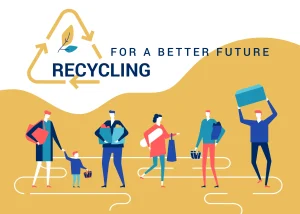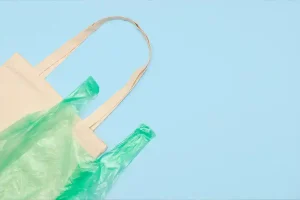Garbage bags are one of the major aspects of keeping our environment clean, but most individuals make simple mistakes when making use of them. Some mistakes may lead to spills extra waste, and damage to the bags themselves. By understanding these common mistakes, you can make effective disposal of waste even easier and more environmentally friendly. Here are some mistakes individuals make when using the garbage bag and tips on how to avoid them
Overfilling garbage bags
Overfilling garbage bags is a common mistake that can lead to a host of problems. Let’s explore the risks associated with this practice and why it’s essential to avoid it.
i)Risks of the bag tearing
Overstuffing garbage bags significantly increases the likelihood of tearing. When a bag is filled beyond its capacity, the excess weight and pressure can cause weak points to develop, leading to rips and tears. This not only creates a mess but also poses potential health hazards.
ii)Difficulty in tying and removing
An overfilled garbage bag presents challenges when it comes to securing and removing it from the trash can. The excess volume makes it difficult to gather the bag’s opening, often resulting in a poor seal. This can lead to:
- Odours escaping
- Pests being attracted
- Contents spilling during removal
Choosing the wrong bag size
i)Inadequate capacity for waste
Conversely, selecting a bag that’s too small can lead to inadequate capacity for your waste. This often results in:
- Overfilling, which can cause tears and spills
- More frequent bag changes, increasing overall plastic usage
- Frustration and inconvenience for household members
ii)Improper fit in trash cans
The right bag size ensures a proper fit in your trash can. An ill-fitting bag can cause several problems:
- Slipping: Oversized bags may slip down into the can
- Overflow: Undersized bags don’t cover the rim, leading to messy spills
- Difficulty in removal: Bags that are too large or small can be challenging to tie and remove
To avoid these issues, measure your trash can and choose bags that comfortably fit with a slight overhang for easy tying. This simple step can significantly improve your waste management efficiency.
Neglecting to double-bag when necessary
Many people underestimate the importance of double-bagging in certain situations, leading to messy spills and unpleasant odours. Here’s when and how to double-bag effectively:
Heavy or sharp items
When dealing with heavy or sharp objects, a single garbage bag may not be sufficient. Double-bagging provides an extra layer of protection, reducing the risk of tears and punctures. Consider the following scenarios:
- Construction debris
- Broken glass or ceramics
- Heavy metal objects
Wet or messy waste
Wet or messy waste can quickly compromise the integrity of a single bag. Double-bagging helps contain moisture and prevents leaks:
- Kitchen waste with high liquid content
- Paint or other liquid chemicals
- Gardening debris with soil and moisture
Odorous garbage
Double-bagging is crucial for containing strong odours, especially in shared living spaces or during warm weather:
- Spoiled food
- Pet waste
- Diapers or other hygiene products
To effectively double-bag, follow these steps:
- Place the first bag in the trash can
- Fill it no more than 2/3 full
- Tie the first bag securely
- Place it inside a second bag
- Tie the second bag tightly
Incorrect bag placement in trash cans
Now that we’ve covered the importance of choosing the right bag size and when to double-bag, let’s focus on how to properly place garbage bags in trash cans. Many people overlook this crucial step, leading to messy spills and unnecessary cleaning.
Proper overlapping technique
To ensure a secure fit, follow these steps:
- Open the bag fully
- Place it inside the trash can
- Overlap the top edges by at least 4 inches around the rim
This technique prevents the bag from slipping into the can and makes removal easier.
Securing the bag edges
Once you’ve overlapped the edges, secure them in place:
- For cans with clips: Use them to hold the bag in place
- For cans without clips: Tie a loose knot on one side of the can
Using garbage bags correctly is essential for maintaining a clean and hygienic environment. By avoiding common mistakes such as overfilling, choosing the wrong size, neglecting to double-bag when needed, incorrect placement in trash cans, and improper storage, you can significantly improve your waste management practices. These simple adjustments not only make your cleaning routine more efficient but also help prevent messes and potential health hazards.
Remember, small changes in how you use garbage bags can make a big difference in your daily life. Take the time to select the right bag for the job, use them properly, and store them correctly. By implementing these tips, you’ll save time, reduce waste, and create a cleaner, more organized living space. Start applying these best practices today and experience the benefits of proper garbage bag usage firsthand.
Say goodbye to plastic—choose Ecopacks compostable bags today!”
FAQ
1)Why are biodegradable garbage bags better for the environment?
Biodegradable garbage bags decompose faster than plastic bags. They help reduce waste and pollution since they are made from materials that break down naturally and decompose without harming the environment.
2)Can garbage bags be recycled?
Most common plastic trash bags cannot go curbside because they clog the sorting machines. Some centres for collecting plastic do have collection options if you deposit them alone. It is however better for the environment using biodegradable or compostable garbage bags.







